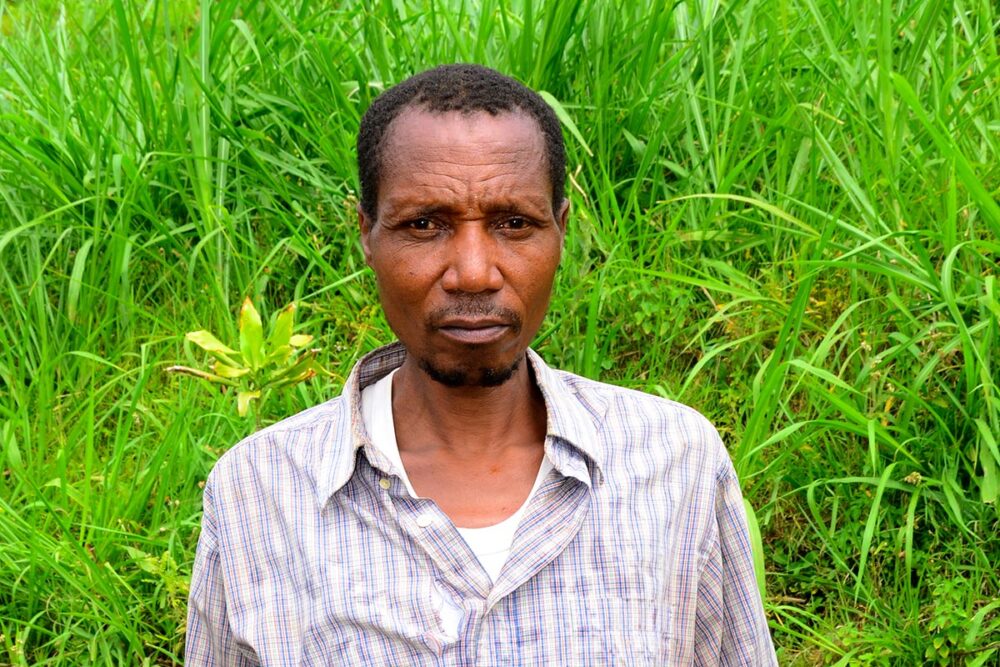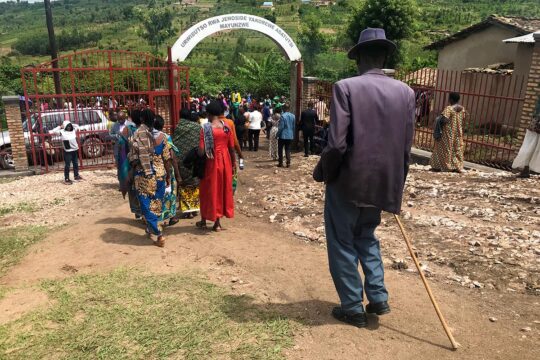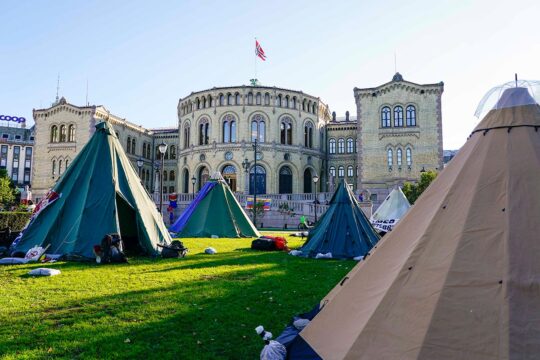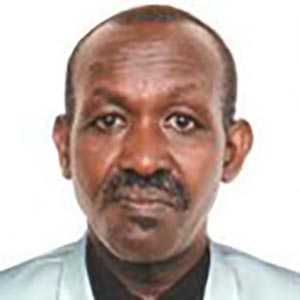After a two-and-a-half-hour drive from Kigali and a 30-minute climb up the Gacaca hill in Karongi district, we arrive sweating and out of breath in Remera, Pascal Hamenyimana’s village. Remera is one of those hills in western Rwanda whose peaks seem to caress the sky with its heavy grey clouds racing towards their favourite spilling out places, the steep lands of the Congo-Nile ridge.
All at once, as a welcome on this late April afternoon, the sun’s rays start peeping through the clouds, creating a spectacle of changing colours in the sky and, intermittently, on the ground. It was here, in this lush setting, that Hamenyimana was born, raised and took part in the genocide against the Tutsis in 1994. And it was here that, after 15 years in prison, the 53-year-old father returned a year ago to try to reintegrate.
“Freedom is precious. I’m happy to have regained it and to be back in the community,” he confides shyly, “but I am also bewildered by the generosity genocide survivors have shown to me despite my past.” At the height of the genocide, he recalls with remorse and regret, from every point in the village “you could observe on Gakomeye hill opposite the movements of the Tutsis to be killed and the houses to be looted.”
Aged 22 at the time, the young Hutu found himself involved in looting and massacres, including the murder in May 1994 of neighbour Michel Ndibyariye, a farmer in his sixties, married with children and grandchildren. All were killed: the family was considered wiped out; in the Karongi district, some 2,850 families are considered wiped out. Before the gacaca courts, Hamenyimana pleaded guilty to the man’s death and was sentenced to community service. On appeal, however, Hamenyimana’s guilty plea was rejected, and in 2008 he was sentenced to 15 years’ imprisonment for complicity in genocide. On May 9, 2023, he was released and returned to his village. “I was scared and anxious, because I didn’t know what was waiting for me here,” Hamenyimana admits.
“I cried like a child”
Sitting on his sturdy, well-polished eucalyptus chair, Hamenyimana doesn’t know where to put his eyes, his hands or his arms. At times, his legs wobble and his feet move back and forth between the floor and the chair supports, as if avoiding danger. His body language and facial movements reflect the discomfort and difficulties he is experiencing -- outward signs of an inner malaise that could just as well be explained by his past as a “genocidaire” or his situation of extreme poverty.
“You see, if I have decent shelter, the rest will take care of itself,” he at last stammers with a furtive glance at his little adobe brick house, with its cracked walls and rusty corrugated iron sheets that give a glimpse of the sky and let in the rain. Sometime before his release, a section of this house collapsed following flooding, and his family deserted it. So, after 15 years in prison, Hamenyimana came home to ruins and the silence of an absent family. “I cried like a child,” he says, still moved.
For seven months, survivor Emmanuel Niyitegeka, the nephew of his victim, took him in and housed him while he waited for his own house to be more or less repaired. “When he reached out to me and helped me, it really touched me,” he confides. “And the more I think about it, the more I sink into regret and remorse, thinking that 30 years ago we lacked heart and humanity towards them.”
The “cow of reconciliation”
To get to Hamenyimana’s house, a narrow path winds through the fields, skirting the steep hillside in places. All around the winding path are scrawny banana plants resembling stalks of overgrown grass around his house, which looks from a distance like a beehive in a tree with bushy branches awaiting its bee population. Here and elsewhere in Remera, the soil is so eroded that terraces have had to be built to retain arable soil and humus. On Hamenyimana’s property, a plot of less than one hectare, bushy hedges provide solid support for these terraces, but also and above all feed their cow.
Installed in a small makeshift barn, a beautiful brindle cow chews the cud and lows from time to time, as if to remind us that she still needs a bit of grass. “She’s three months pregnant and I’m praying that she’ll give us a heifer,” explains Hamenyimana’s wife Clémentine Nyirahabineza. This cow was also given to them on loan by another survivor, Ezéchiel Nkurikiyimana, to help improve their living conditions. Under the terms of their agreement, the second heifer will belong to Hamenyimana’s family.
“It was out of compassion that I thought of this family, which was large and malnourished with land that wasn’t very fertile,” says Hamenyimana’s neighbour Nkurikiyimana, a genocide survivor. “We gave them this cow on loan, so that they could have milk and manure.” He sees it as “the cow of reconciliation”. The initiative comes from the victims, because “everyone needs to live in peace with their neighbour, no matter who took the first step”, he explains, before adding: “Even if they killed our people, today their families also bear the after-effects. Perhaps what we’re doing will help them recover the humanity they lost with the genocide.”
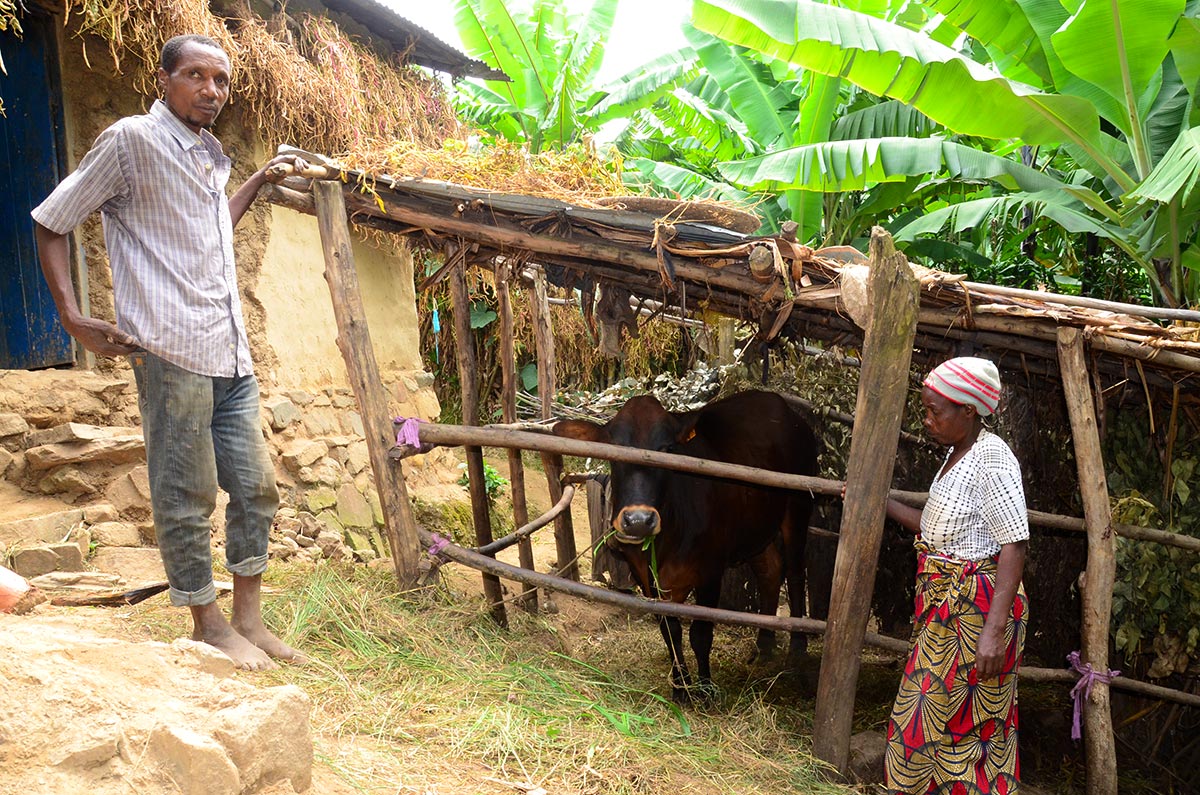
Back to ordinary rural life
Hamenyimana’s day is now organized. It begins at dawn with the care of the cow, followed by work in the fields and socialization in the evening. It’s not like when he was in prison, where he preferred to rest, getting up only for morning porridge and the evening meal, while his fellow inmates went to work outside and others learned trades.
He says he was “too old to learn trades” like carpentry, masonry and shoemaking. But his wife, who has known him since elementary school, scoffs, reminding him that “even people older than him are now benefiting from what they learned in prison”. She avoids telling him, she confides afterwards, that it’s rather down to laziness and especially because he had not accepted his conviction.
In prison Hamenyimana boycotted apprenticeship for a long time, before giving in to his wife’s “pestering” to learn basket weaving, a trade he calls a “women’s trade”. For the ex-convict, the obstacles are still numerous. “I have nothing that can serve as a springboard for economic reintegration, such as a solid roof for my family and a trade to make an income,” he complains. But his wife has not given up hope of getting him into basket-weaving. “I’m going to gather everything he needs and make it available to him,” she says. “He’ll end up weaving, and I’ll sell the product myself at the market.”
Wife makes first gesture towards survivors
After her husband’s imprisonment, Clémentine Nyirahabineza lived in extreme poverty, with a small plot of land, a thatched cottage and six children on her hands. She also bore the burden of repayment for the property her husband had looted or destroyed during the genocide. “No one can know or understand what I went through,” she confesses. “At the height of my malaise and despair I came to think that I would not have married him if I had known about his past in relation to the genocide.” But this woman who describes herself as a “warrior” has not given up. Throughout her husband’s imprisonment, Nyirahabineza worked in the fields, renting land to cultivate. The produce from this fed the family and gave her a little money for him in prison. She also ran a small vegetable business. Today, aged 53 like her husband, she continues these activities.
Nyirahabineza took the first step towards the survivors to tackle the problem of restituting property looted or destroyed by her husband. Given her living conditions and her sincerity, they agreed to negotiate a discounted payment. Her regular contact with them and her outspokenness paved the way for a rapprochement with her family. When she was baptized, it was the daughter-in-law of her husband’s victim who became her godmother. It was this same family who offered them land to farm and a home when their house was destroyed by the rains.
Socially accepted by the whole village
Upon his release, Hamenyimana was afraid of two things: his place in his own family and the reception he would receive from genocide survivors. But, he says with his face relaxed and jovial, “I was touched by my wife’s fidelity, unlike many others who had children while their spouses were in prison for so long”.
Did he talk to their six children about his situation? No, he admits, but their mother explained everything to them. The youngest, aged 18, still lives with them. The others – the eldest of whom is 30 – “get by here and there”. Nevertheless, there are muted recriminations. One of them, François, said to her: “If we haven’t all studied, it’s because of our father’s absence”. But they all come to see their parents regularly.
Everything seems to indicate that the groundwork has been laid for successful social reintegration. “The community is fully involved in welcoming me, and the administrative authorities were quick to help me obtain a national identity card,” says Hamenyimana. “I take part in everything” in terms of public life, he adds, “including community work and meetings, but above all, during this 30th commemoration of the genocide against the Tutsis, commemorations plus discussions, exchanges and testimonies relating to the genocide”.
And to his astonishment, “the survivors have welcomed me, giving me what little they have - a thousand francs or two - to support my reintegration. It reminds me of the good old days before the genocide, when we lived in harmony.”
AN AGRICULTURAL COOPERATIVE OF SURVIVORS AND EX-“GÉNOCIDAIRES”
As in the past, the Nyakagezi stream, which unites them more than it separates them, continues to flow between the two hills. “If the hills of Remera and Gakomeye still live together, why can’t we?” asks Pascal Hamenyimana. Yet he recalls that in 1994 Remera, which had almost no Tutsis, massacred those of Gakomeye, where today only ruins and rare survivors can be seen.
Among the latter is Ezéchiel Nkurikiyimana, who gave him a cow. Paradoxically, it is these survivors that the ex-convict is counting on to set up his agricultural cooperative project between survivors and former “genocidaires”. The aim is to kill two birds with one stone: boost reconciliation and lift people out of poverty. And this cooperative, supported by his wife Clémentine who is already hard at work promoting it, is already arousing enthusiasm among at least two survivors, Nkurikiyimana and Emmanuel Niyitegeka, the nephew of a man killed by Hamenyimana during the genocide.
“I subscribe to this idea that, at the end of the day it leads to reconciliation,” confides Niyitegeka. For this local leader of the Adventist church, the lesson is that “wealth is acquired through work, not through crime and treachery, otherwise it disappears like smoke, as it did during the genocide”. Like Nkurikiyimana, he and his family are ready to join Hamenyimana’s cooperative.
On the strength of this support, Hamenyimana says he has already contacted three of his former fellow prisoners. Their agricultural cooperative is due to start operations in a field rented by his victim’s nephew. But his big dream, he says, is to then cultivate the fields and banks by the Nyakagezi stream, “symbolic for our communities”. “It is there forever and, like the stream, we want our cohesion to last.”
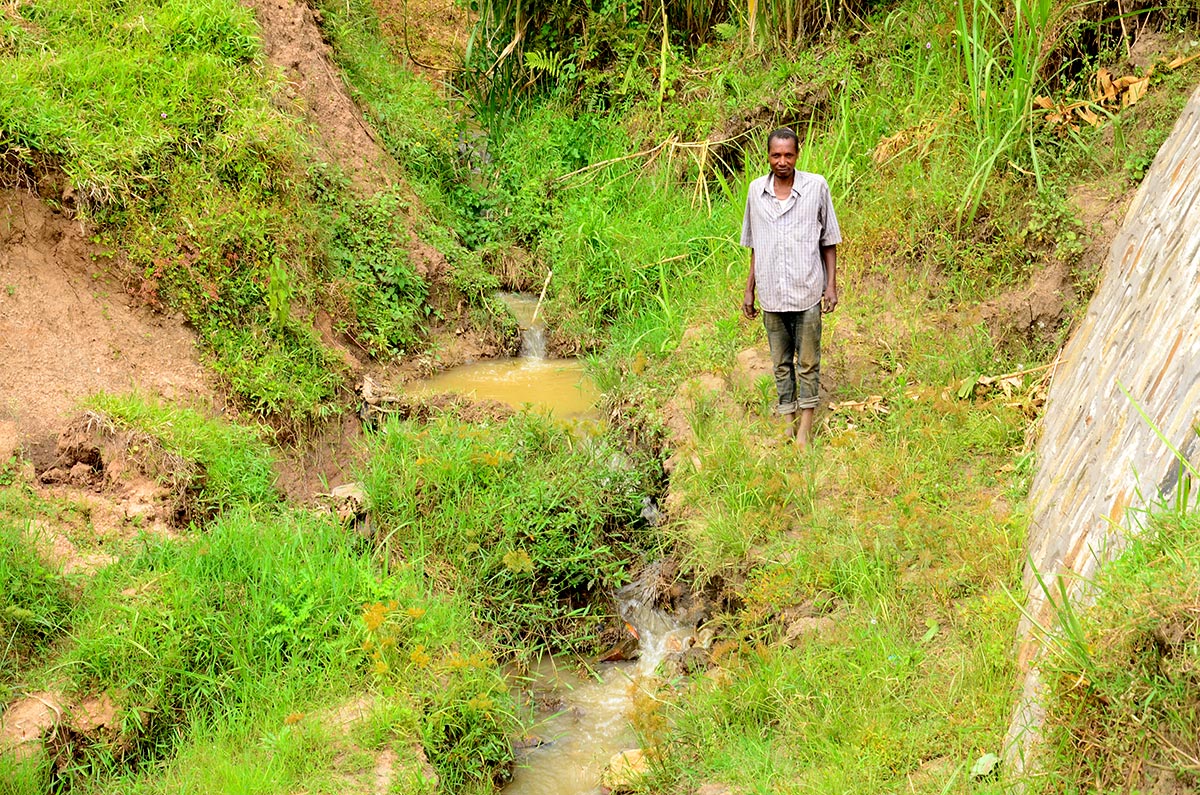
Pascal Hamenyimana near the source of the Nyakagezi stream, an age-old symbol of unity between the villages of Remera and Gakomeye, separated by the 1994 genocide. Photo : © Emmannuel Sehene Ruvugiro


